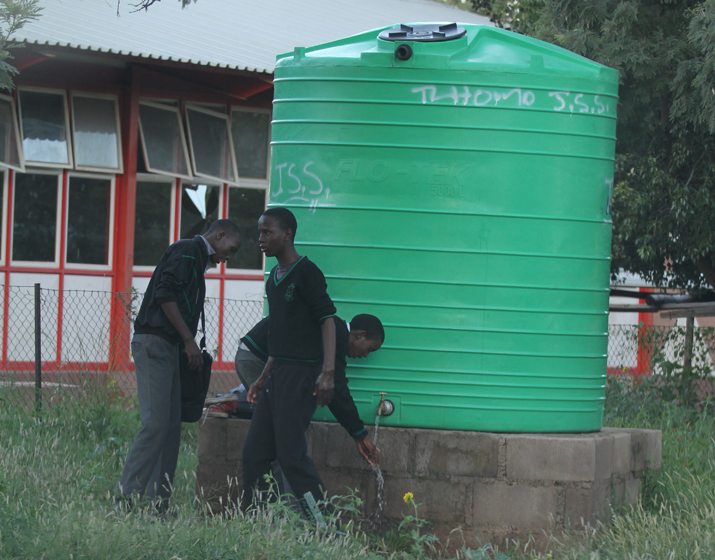Water Utilities Corporation has refused to accept responsibility for the 962 cases of diarrhoea and some deaths reported to be a result of water contamination registered in the village in March alone.
According to the statistics from Ngwaketse District Health Management Team, at least 962 cases of diarrhoea were registered in March alone. The team manager, Josephine Mosimanewakgosi said they have been experiencing cases of diarrhoea in the district from January to February with cases ranging between 40 and below per week. According to her, statistics increased from the second week of March. They registered 68 cases which then increased with time. She said though they have not identified the cause yet, contaminated water and foods were the common causes of diarrhoea.
A source at Kanye’s Seventh Day Adventist Hospital said a total of 60 children were admitted for diarrhoea since the beginning of March with 10 deaths recorded, four of which died at home while six died in the hospital. Four elders reportedly died of diarrhoea.
A resident, Lebogang Lebogang who lost a nephew last week who stays in the same ward that was affected said they fear for their lives. He says his deceased nephew complained of stomach pains and later lost his life within a week.
General Manager WUC Mathews Sebina last month confirmed that drinking water in some parts of the village got contaminated as some faecal elements were detected in the water during tests. The Corporation’s Communications Manager, Matida Mmipi said the investigations were still underway to determine the source of the contamination. “Suspicions are that the heavy rains which were experienced in the village during that period may have raised the water table to a point of contact with an undetected leaking pipe. The rampant use of septic tanks by the public in the village could also have resulted in cross connections and contamination of water,” she said, adding that investigations into the matter will be complete by end of April 2014.
Mmipi says the problem is restricted to Goo-Ruele Ward, especially around the council houses commonly known as Old Camp.
Meanwhile two local Attorneys have said that WUC can be held liable provided there is enough evidence that the outbreak of diarrhoea is caused by water contamination due to negligence of the Corporation.
Attorney Uyapo Ndadi said, “Certainly, the WUC can be held liable for diarrhoea and the deaths it caused because they have duty to provide the nation with clean water,” he said.
He said the public can take WUC to task if they can establish that the water was contaminated because of them.
Another attorney Maikano Pule also corroborated Ndadi’s contention that the patients and relatives of the diseased can sue provided they prove negligence on part of the corporation. “They also have to prove that diarrhoea was caused by direct consumption of water.”
How safe is drinking water
Water utilities have said they cannot guarantee that there will not be further contamination as well as accepting that the infrastructure they inherited from Water Affairs was rather old and prone to breaking down. “The problem of old dilapidated pipes is common all over Botswana and the government is working on replacing them as and when funding becomes available” reads their response. The Botswana Gazette is in possession of some regulators reports that show that in terms of water quality, quarterly tests show that the 95% water quality test was not reached with no area in Botswana even coming close to 90%.
Sources at Water Utilities say the parastatal’s ability to test water frequently is severely hampered by limited human resources. “It’s doubtful that water is tested as regularly as expected. The division responsible is severely short staffed and the recent problem in the Kanye/Moshupa area limited their capacity further,” the source said. In earlier communication Mmipi insisted that they were complying fully with the standards set out by the Botswana Bureau of Standards for drinking water.
Botswana Standard for Drinking water BOS 32:2009(pg 6) says water must be tested every three months for populations of over 10 000 and every two months for populations of under 10 000 with tests being done more frequently in instances of water borne disease outbreaks.
Last year a leaked internal memo from the Embassy of the United States of America in Botswana spoke of “unsafe levels of biological contaminants” following tests they conducted in some of their residences. According to the Embassy the tests were done by an independent Botswana based company and the results were shared with Water Utilities which however insisted that water in Botswana was still safe to drink adding that the contaminated water was likely a localised thing. The US Embassy while emphasising that the result of their tests were an internal matter have stood by their findings.

